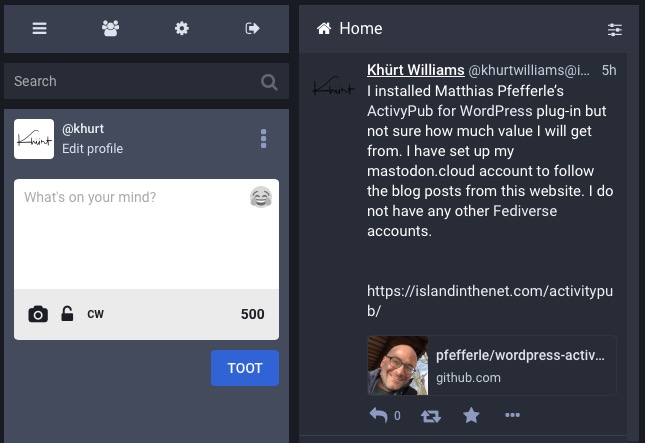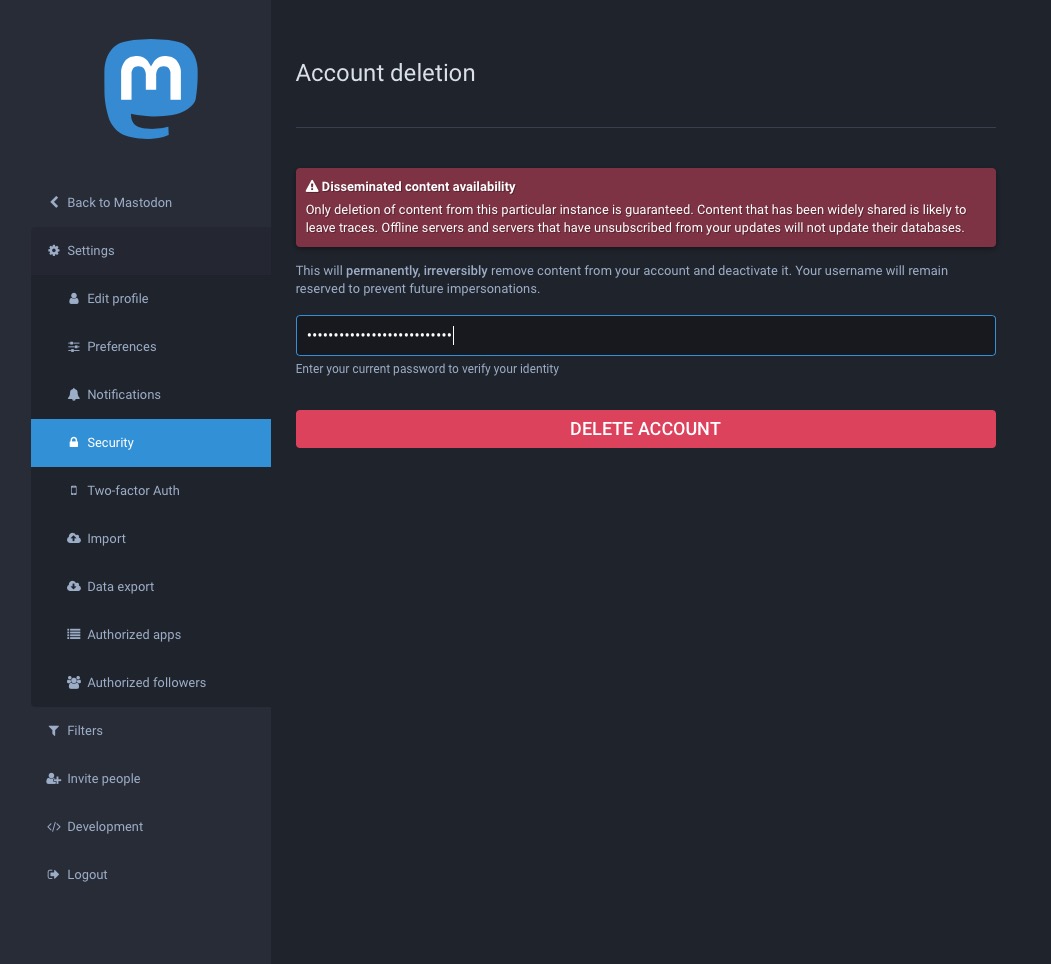ActivityPub is an open standard protocol for decentralised social networking. It enables various platforms to communicate and share content, allowing me to follow and interact with users on different platforms.
ActivityPub's decentralisation empowers users like me, offering greater data privacy and control. Developers can implement ActivityPub in their applications, encouraging compatibility and innovation. Notable platforms like Mastodon and PeerTube already use it, providing alternative social media experiences.
Given my background in information security architecture, ActivityPub aligns with my interests in decentralisation and data control, my love for open-source and the IndieWeb ideal of a people-centred alternative to the "corporate web".
ActivityPub represents a step toward a more open, user-centric, and privacy-conscious Internet experience by facilitating federated communication across various social media platforms.
In 2017, I started using several IndieWeb plug-ins for WordPress. The goal was to make my website a more significant part of what was happening while adding capabilities. I syndicated (POSSE) most of my blog posts to Twitter, Facebook, and Instagram using Webmentions, Semantic Linkbacks, and Post Kinds. I experimented with IFTT and Zapie to PESOS my content posted elsewhere back to my blog.
This arrangement worked well until Facebook shut off the API for personal accounts, and Twitter and Instagram started making the use of their API more challenging. I had read about Mastodon and saw that many Twitter users were leaving the platform and moving to Mastodon. I started learning about ActivityPub and thought, why not add that capability to my website?
I have installed Matthias Pfefferle's ActivyPub for WordPress plug-in. With the ActivityPub plug-in installed, my WordPress blog functions as a federated profile, @islandinthenet.com@islandinthenet.com, and my author profile at @khurtwilliams@islandinthenet.com. Anyone Mastodon user who follows the @khurtwilliams@islandinthenet.com profile will see any blog post I create on my website in their Home feed.

The ActivityPub WordPress plug-in lets my WordPress site join the federated social web using the ActivityPub protocol. I publish blog posts and articles on my site, which users can share and interact with on other ActivityPub-compatible platforms by following either my author or sitewide profiles. It will enhance the reach of my posts while promoting decentralisation, giving me more control over my data. This plug-in ensures compatibility with other ActivityPub-enabled services, making it easier for me to connect with a broader online audience while adhering to data ownership and decentralisation principles.
I have also set up a Mastodon photog.social account to share the blog posts from this website. You can follow me at @khurtwilliams@photog.social. I need to determine how much value I will get from ActivityPub as I use Mastodon sparingly. I have no other Fediverse accounts, so this is more about staking my claim in the Fediverse.


